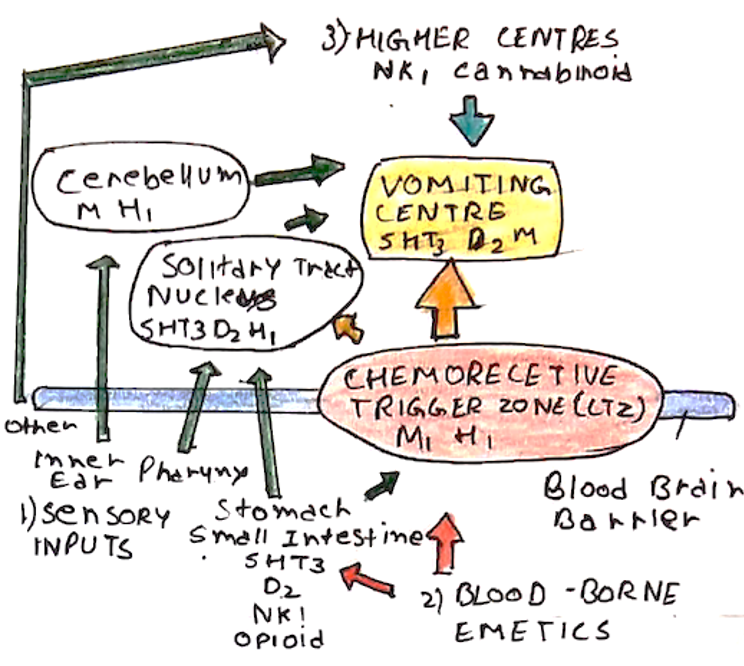The stomach acts as a reservoir for food, aids in digestion and uses acid to kill pathogens that we eat.
– Thousands of gastric glands drain into the stomach, giving daily secretions of 2 litres
These gastric glands are composed of two main subsets of glands which have different functions:
– Oxyntic glands – contain parietal cells which produce acid-HCl and intrinsic factor (Binds Vit B12)
– Chief cells – these secrete pepsinogens and enzymes needed for digestion.
One of the most important features of the stomach is acid production, which is under the control of several factors
Pro-acid factors:
GASTRIN:
– This is released by G cells
– This binds CCK receptors on enterochromaffin (ECL) cells leading to histamine release
HISTAMINE:
-This is released by ECL cells
– It binds parietal cell H2 receptors which are Gs coupled
– Increases density of proton pumps on parietal cells
Acetylcholine:
– This binds M3 channels on parietal cells (Gq coupled)
– This leads to a direct increase in acid release

Anti-Acid factors:
SOMATOSTATIN:
– This is a negative regulator released from antral D cells in response to luminal acid
– It binds Gi inhibitory receptors, directly inhibiting parietal cells
– It also caused a decrease in gastrin release helping to inhibit acid release
SECRETIN:
– This is secreted from S cells in duodenum in response to high luminal acid
– It acts to decrease gastrin release and stimulate HCO3 production
PROSTAGLANDINS:
– This is released by stomach cells to decrease acid production and stimulates mucus
– It also stimulates HCO3 production to neutralize stomach acid
Vomiting Physiology
The medulla contains the vomiting centre and the chemoreceptor trigger zone (CTZ), which lies outside BBB, meaning that it can be directly stimulated by drugs and toxins:
– CTZ has 5-HT3, Dopamine, ACh and histamine receptors
– Chemical activation of the CTZ activates the vomiting centre
– Therefore, inhibition of these receptors is a key target in the treatment and prevention of vomiting.

The vomiting centre can also be activated by stomach stretch receptors and the vestibular centre in the inner ear.
– Activation of these areas leads to increased signalling along the vagus nerve using the neurotransmitter ACh
– This binds M1 receptors activating the vomiting centre.
– As there are so many different receptors causing activation of the vomiting centre, there are a plethora of different targets for anti-emetic drugs.

